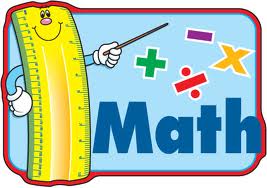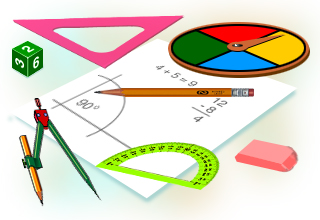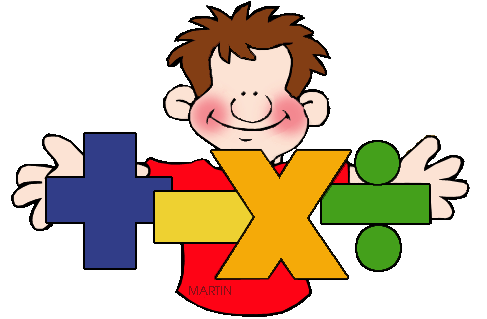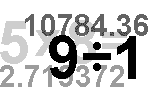

Math is GREAT! This year we have a new math series called Math Investigations.
Investigations is based on experience from
research and practice, including field testing that involved documentation of
thousands of hours in classrooms, observations of students, input from teachers,
and analysis of student work. As a result, the curriculum addresses the learning
needs of real students in a wide range of classrooms and communities. The
investigations are carefully designed to invite all students into mathematics –
girls and boys; members of diverse cultural, ethnic, and language groups; and
students with a wide variety of strengths, needs, and interests.
Based on this extensive classroom testing, the
curriculum takes seriously the time students need to develop a strong conceptual
foundation and skills based on that foundation. Each curriculum unit focuses on
an area of content in depth, providing time for students to develop and practice
ideas across a variety of activities and contexts that build on each other.
Daily guidelines for time spent on class sessions, Ten Minute Math (3-5) reflect
the commitment to devoting adequate time to mathematics in each school day.
 All about Math Investigations
All about Math Investigations
 click videos on
concepts by units in Math Investigations
click videos on
concepts by units in Math Investigations
http://www.tcaps.net/math/grade4/start.html
 Encourage
Students to Think, Reason, and Share Ideas!
Encourage
Students to Think, Reason, and Share Ideas!
| Kid-Friendly Version of
the 8 Mathematical Practices: |
1. I never give up on a problem and I do my best to get it right |
2.
I can solve problems in more than one way |
|
3. I can explain my math thinking and talk about it with others |
4. I see the math in everyday life and I can use math to solve everyday problems |
5. I know how to choose and use the right tools to solve a math problem |
|
6.
I can work carefully and check my work |
7. I can use what I know to solve new problems |
8. I can solve problems by looking for rules and patterns |
Parents & Students: This handbook is used in class, through a paper copy, as well as this online version for use at home. Use it as a reference for classwork, homework, and while playing math games.
 click on the units and names to take you to a hyper link of the workbook pages.
Print them off if your child forgot them at home and bring them back to school
the day homework is due.
click on the units and names to take you to a hyper link of the workbook pages.
Print them off if your child forgot them at home and bring them back to school
the day homework is due.
Factors, Multiples, and Arrays: Workbook pages
 Unit 1:
Factors Multiples and Arrays: In
this first unit in the multiplication and division strand, students deepen their
understanding of the operation of multiplication. Students use rectangular
arrays to represent the relationship between factors and multiples, use what
they know to solve problems that increase in size, and focus on solving problems
efficiently. They continue to develop fluency with multiplication combinations
(facts up to 12 x 12).
Unit 1:
Factors Multiples and Arrays: In
this first unit in the multiplication and division strand, students deepen their
understanding of the operation of multiplication. Students use rectangular
arrays to represent the relationship between factors and multiples, use what
they know to solve problems that increase in size, and focus on solving problems
efficiently. They continue to develop fluency with multiplication combinations
(facts up to 12 x 12).

 Unit 3:
Unit 3:
 Unit 4:
Unit 4:
 Unit
5:
Unit
5:
 Unit 6: Fraction cards and Decimals Squares
Students develop ideas about fractions by identifying fractions of an area (3/4
of a rectangle), fractions of a group of objects (3/4 of 24), and decimal
fractions (.75). They compare fractions of different wholes (1/3 of a 6 x 4
rectangle and 1/3 of a 10 x 10 rectangle), and combine fractions using models
and reasoning. Students use 10 x 10 grids to represent, compare, and combine
common decimals in the tenths and hundredths.
Unit 6: Fraction cards and Decimals Squares
Students develop ideas about fractions by identifying fractions of an area (3/4
of a rectangle), fractions of a group of objects (3/4 of 24), and decimal
fractions (.75). They compare fractions of different wholes (1/3 of a 6 x 4
rectangle and 1/3 of a 10 x 10 rectangle), and combine fractions using models
and reasoning. Students use 10 x 10 grids to represent, compare, and combine
common decimals in the tenths and hundredths.

 Unit 8:
Unit 8:
 Unit 9 - Penny Jars and Plant Growth:
Students explore situations in which two
quantities change in relation to each other. They work with changes over time,
such as increasing or decreasing speed or the growth of a plant, and situations
of constant change, such as how the number of windows in a building depends on
the height of the building if every floor has the same number of windows.
Students create and interpret graphs and tables for these linear and nonlinear
functions and connect these graphs to the situations they represent.
Unit 9 - Penny Jars and Plant Growth:
Students explore situations in which two
quantities change in relation to each other. They work with changes over time,
such as increasing or decreasing speed or the growth of a plant, and situations
of constant change, such as how the number of windows in a building depends on
the height of the building if every floor has the same number of windows.
Students create and interpret graphs and tables for these linear and nonlinear
functions and connect these graphs to the situations they represent.
Basic Math Fact Worksheet: Mad Math Minutes is a great way to practice basic math skills in addition, subtraction, multiplication, and division. You pick the number of and types of problems that you want to practice.
 Need Help with math facts?
click on the picture. You can print off worksheets to help you with your
math facts in addition, subtraction, multiplication, division, and more.
Very helpful.
Need Help with math facts?
click on the picture. You can print off worksheets to help you with your
math facts in addition, subtraction, multiplication, division, and more.
Very helpful.
 Click on the picture to take you to making a worksheet on double digit by double
digit numbers. Feel free to copy these worksheets off so your child can practice at home.
Click on the picture to take you to making a worksheet on double digit by double
digit numbers. Feel free to copy these worksheets off so your child can practice at home.
 Math
worksheets to help reinforce topics taught in class.
Math
worksheets to help reinforce topics taught in class.
Click on math teacher graphic to take you to Mrs. T's Website: st005.k12.sd.us